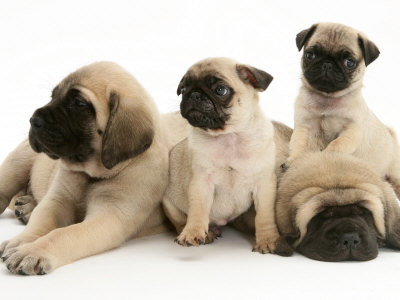 The process of preparing your house for your new bundle of joy will begin before he arrives. If you use fertilizers or pest repellents on your lawn or in your garden, leave a gap of 48 hours before you allow your pet access to the area. Drawstrings hanging from draperies can choke your puppy if he manages to get it tangled around his neck. Until your pup is house trained, keep all knick knacks, ash trays, curios and crystal out of his reach. Make sure cabinet doors have locks, or purchase cabinet locks for these.
The process of preparing your house for your new bundle of joy will begin before he arrives. If you use fertilizers or pest repellents on your lawn or in your garden, leave a gap of 48 hours before you allow your pet access to the area. Drawstrings hanging from draperies can choke your puppy if he manages to get it tangled around his neck. Until your pup is house trained, keep all knick knacks, ash trays, curios and crystal out of his reach. Make sure cabinet doors have locks, or purchase cabinet locks for these.
Get down on your hands and knees, and begin looking at your house the way a pup would. What would he find interesting enough to chew or put in his mouth? Remember, a puppy is attracted to most of the same things a toddler or a crawling baby is. But you can keep them away from the sources of decaying organic matter .Keep your basements off limits for your puppy .Keep medicines away from doggy level. Take time to make your house a safe and comfortable environment for your little pup. The basement or garage is home to a lot of junk and is full of potentially harmful things that can harm your pet. Keep you garbage can closed with a lid at all times .
Eating rotting food can cause food poisoning and other serious illnesses.
Eating rotting food can cause food poisoning and other serious illnesses.
Puppy Proofing Outside the House
If your garden is full of exotic plants, it's probably best if you keep it off limits to your pup. Keep your bathroom door latched at all times from the outside when not in use. Pills, bottles and strips - make sure all are safely locked away in cabinets. Keep your children's pencils, erasers, crayons and other stationery off limits by putting these in a large bin, and placing on a table so he can't reach it.
Puppy Proofing Inside the House
Before you bring your new pup home, take a look at your house through his eyes. Keep your pet away from your garage - there are too many old paint cans and tools there for it be safe for him. Even if you confine him to a crate, there will be times when he's allowed to roam the house and yard free. If you have cabinets in your house with loosely hinged doors, would he be able to accidentally enter one and lock himself in? Are there electrical switches or plugs installed at floor level? It's a part of the wild instinct that remains in them and there isn't a lot you can do to curb this urge.
Your puppy might have difficulty navigating your stairs.Which corners would he be attracted to? Pups are notoriously fond of rummaging in garbage, even when there's good fresh food available at home. Puppies and shoes have an unspoken bond between them. Purchase baby gates and use these to seal off the staircase. Tuck these away, and duct tape electrical switch outlets that are at his level. Electrical cords dangling temptingly within reach of your pup can be too alluring to ignore.
Plants like cactus and mushroom are potentially dangerous for a pup. Remove your children's toys from the floor, small toys like cars or blocks can be swallowed, and can lead to perforation of the abdomen. Make sure your fence is secure especially near the ground, to prevent the possibility of your pup sneaking out through to the other side. Consult your vet about the types of plants that could cause him harm .Remember, unlike a newborn baby, your pup will be old enough to walk around and explore on his own.
Keep your shoes in a shoe rack with doors. Keep your cosmetics and make up off your dressing table, and safely tucked away in drawers and locked cabinets. You might not know it, but your puppy could swallow shoelaces as he chews on your shoes. Use this logic to figure out what other potential dangers could be lurking in your home and garden. Most of the time house cleaners, solvents, bleach and other potentially dangerous chemicals are stored in these cabinets, and these can prove a poison hazard to your puppy.

No comments:
Post a Comment